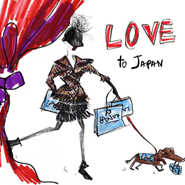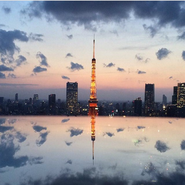By Avery Booker
In most major luxury markets, from North America and Western Europe to South Korea, 2015 was remarkably similar to 2014 in terms of Chinese visitor trends.
As they have for the past several years, Chinese tourists – more than 60 million of whom ventured overseas in the first half of the 2015 – sought to avoid higher prices and enjoy better shopping experiences outside of China.
With the exception of their rising numbers, there were few major surprises along the way this year in established tourism markets.
Rising star
However, this was not the case in Japan, which saw a tidal wave of Chinese tourists, property buyers and students hit its shores in 2015.
The number of Chinese tourists visiting Japan more than doubled this year, helping the country come within reach of its goal 20 million tourist arrivals by 2020 well ahead of schedule.
But beyond simply showing up, Chinese shoppers in Japan have shown themselves to be exceptionally big spenders, giving Japanese retailers as well as major luxury brands a welcome boost.
 Avery Booker
Avery Booker
According to The Wall Street Journal, Chinese tourists accounted for nearly half of the $8.1 billion spent in Japan by foreign visitors from July to September, an 82 percent increase year-over-year.
Considering Chinese tourists now enjoy easier and longer United States visas, an improved visa process in the United Kingdom and could take advantage of a weaker euro, why did so many head to Japan this year?
Along with the usual currency and visa reasons – a weaker yen did attract a number of Chinese travelers this year – Japan is quite simply better placed than almost any other global luxury market to continually attract Chinese shoppers.
The country has flagships from virtually every luxury brand and some of the world's best multi-brand stores, and famously high customer service standards.
But beyond that, homegrown Japanese brands – spanning electronics and jewelry to cosmetics and apparel – are also massively popular among Chinese shoppers.
In addition, this year Japan was able to take advantage of a dip in Chinese tourism to nearby South Korea, exacerbated by the MERS crisis.
The question for Japan's Chinese tourist boom remains: Will it continue in 2016?
Ship shape?
This is always a tough one to answer, particularly for anyone who remembers fall 2010, when – in the wake of a major diplomatic spat between Japan and China over uninhabited but mutually claimed islands – Japan saw previously strong Chinese arrivals vanish, seemingly overnight, much to the delight of South Korea.
 Lanvin Japan sketch
Lanvin Japan sketch
If the current status quo of decent relations stays intact in 2016, expect the number of Chinese arrivals in Japan to stay strong.
That said, owing to the rising popularity of cruise trips, we will likely see more low-end visitors in the year ahead, not just affluent luxury shoppers.
But, given the perennially hair-trigger nature of Sino-Japanese relations, no smart brand should shift its focus completely towards Asia.
THE FACT of the matter remains that Chinese travelers will remain a strong driver of sales worldwide for years to come, and Japan's recent success does not necessarily come at the expense of North American or European revenue.
Avery Booker is New York-based partner at China Luxury Advisors. Reach him at [email protected]. Reproduced with permission and adapted for style.
{"ct":"+UbVZE125kB8+W99Ja7ELYr0YQV1mHneKh2O947Cdi8bCMIyCNRHo1a6C7P4LIgYyOviIRauj8B3z1oqcuZui3OCdDt47Vsg3mDwe1Mymi4QFPo2ZmpH9PcVQ+HuoKBossQfqvThRFlp1LIXHh8Jn6NCXUfhiC26Qo9Rgk2RsHkBH+UbgLbb4VJDCFAUKDrPRsSxCv6w5X4bPmjmQSb3BZv9ruKNyM9VAncpk9\/uZOaOekjGzLYGx1h6CIGLg7L7fucYJkLcz57bGdX0iEv2IHz0J6KaRyv9PiQbFdL2D\/bkHRvBUNYBwUamG2gsgo5jFLmQXLSnQGQxXFdAffr3Tu5S4KHKOt9scE7YO7Ik8UFIj0GDIRYkZhl8cOE52IpM3SlcjPzu+i4kacNur+4ABGD+KqwZIb30VJ8C4puTT4zzqfpve6t3g2wfkHPp2yYem1pkZo65a9uYGgn2ZbdpF\/hUYqIKge836h7nuI4QM+GX8KRIwvah8+YHMCt5gMwP+cMTcntbz6NpxWBrL7oT3UC5Qfyy+UgVuKpaFIo\/VwMtfYN9xDWA4pYO\/t1NRRWYoLfvgRNHNzMalkAV7s7UZAblTq+ta8EZoDW9i71w35lwguK3EUBECiExb6ur3sZZ+YLdkuU83tgx93KUduGVmQax1lr8O2ErKkoq0UM+0Ekka7bKr\/v8+KA0ekYbbwVG1N5BUilr3omD5UwTEp754HjONmYQFIQ3fF3uGBlBzZotM+wMgQBRy+mz+QuZ9Bx98ehFwekh6Sn9PSEWwa5zsyMVr27FBW+75I6fJ2nlTjT8TAZFKCFKqph8oz\/kdZ\/dP5hH0mwJCKJ4WN08Jq1MnzSzMriKR5R+0L5JkNbUFEBcKhWu1DhFrpWhvaU776aDpuN4NEZKpKzew4hLn5rUHAq7c3IRnelVFfCR2POpV4iqzJ7tRIAVo4uqUUYxGxUfx+F8iWBEHl9U6A29a+FxP\/lkB2BtJU6rsBXQz4dhnSVr60o6vovN0zpUUe6lVtcQ\/zbwKcgdDHqnMue5o1P6RAq8eUVKIWa92NPPceQi+n2itytWm\/ignxxHfG1slBw3lkFdNki+UvPevz9Yttx0lgI3jyV37vyyBI\/\/QRM9EvJ2585NDkko+g\/kiJmkdbBKqH7N+uB+ZBPYefrPOBK2ueRa1Y4+p6GDdEngJ1yOraSdkLcCBjq3oXc3zXyRGX2jVx2LL40koCdvpareTA741sVMdps2ICq0Qh98ClIbC9pNKJ4tMOvrkOlYcCyNVxcFQS26mkPyR4m2DHyUJ1CgxwNAj7AgTh\/\/HNKJ79bnP9xz1UAuP95yIBh0dRgJsKGiPJzmy5HY4hhaQNA1c4HN4bpRkT1oKLtUX13o5PvrDBx64K9PEifXGZB6Gvp5GpLKAQF08IHBoGRW1k2psiHdfSgSHMHwyluSLQBwUSBe\/NIJvx\/88Pd7Po0+2uEn13yUxoQ51zOquVf7IiBqgvecCNQayDa4MJy1NfUjWoMFAGEB8R76KvyZeJNv6EEMEpRLsCIaOd7w1WEpR4T9tYH\/miWp1CI9gTHDvOwigrWyyzpp2J9iZ+\/S\/iKXl1iRjrSJARLpamibRX+7SmVPm5SZPl4IrlaRmNYng4whDqKWucr+GFLBhUcPuDedmZGcyw\/c0tuYArgBywOpwOvB3jjwElQvpki1FbtfBH7d4qbEh4HY7p6YlCwBNlo5dMN4\/p4q7QlCloRa34Qw+v3brr6wdHCqeH7DsNw2zoqFLQKWoBzRTkkyGuiXAJyuAEH46tbyxYkw0Xb2L730qoAgGgOwRQkTPd1EQJlNO+iG9JyiIqG9+VRCqaTd90pykTLFz+8JNgmQxSxTcBAxMO6lY0mJW034XnXbns1DWTrrbcRVvCgc157u98qcP0I11rfy5QCbLYJsM8jVjkEe3is\/eHsmJL3hVfBTu11HYvMjw3cnrRmSdsZ70kmoCagxusCQ9hB4cPfKJVdhXDI1yIypBByX\/KjnSYupzxq95dhGORq+zzy7R05SFaE6Ztj6VL87DJBClK\/hqd+pG9CiWn4TDjhHjDlIJ6o85\/DxrGsWsozby9rcGkSIFRT\/U+ep\/+fuHp\/41YbqZkyIDoAPSj2TwfV02zZfgb7F9fs037h23hfRiL6J4hWphkrZ7HLC4SgmIIA17Mr43J8Ijl+kJYZX8zbTiZ\/mIRFPiWXuRpiFCvkwU8uExqkDDskjr5+KRwPnxNv2VA+CcvPKW+b80J1\/rXxXqODbnrEF\/UNxEKgZ\/lKh\/1FyV4PHP8be01nZO+\/ayHAbk4n7XKvCwxY\/YmTB7+SUhxecmTe7cUM4+\/ORtIN6WXqJFxP8wCqJLBNyFMse6NLXRlsLuXjmDFNIaPbuhs06JhfqRKckj9VFaCqmt1mf+KWiPSgie0lnznP2kNviUqZkXuyWWmFKhECAujIEkuRRiONaTir8Zth4BEvl5QZIAI8g3NEjbSK2h750zBzgj\/G1E9S8WBWCbUCfIFSCh4dY3tsW74kD+emNDLDFm1YrK1rukvtSW61sEg0FjBQp7HCXmBZTYqXEGdF7z7eemRoYbQRsPeuwtCs5FzUbs652CGjadkOtBt91exmeqgZNQHy8Halv+nTbXoAgX51N7L+ayD0deuIiYPxay1UTqf668hnR6sL1156YfROIoe3du+b0kxOplTb\/cnkJYcXxNIw5oDJ6bvzG7Fml3P9inFZoD7tLAp830VwwNFV+RZB+aPi3xlwn248CzNYI\/4lstz0oeu5LtcJ4eIUrckMuL37ODvJseRbvV1Jk5hvWjYXxD9RBaDOeYxOmSYoJW+zC8HjGSBNnqWjlQYwbRY4LLOnYpm0k1T6DRu6WsU8FGLKzkhszFcEhaWDj520CWYkOwr9oAQpP0G+2F\/ToBrJf9wegW0cgJpPEF4o6aWx4OhtXggXIGy3yv6ZcNNL1fPdiSjdqF0FUA4NHtavzVNXdKID+Sa89WMLCJFwAxST2NB4xl0JLEvUSZnbXgVVWFAD\/hvbfZtR2hNYNav1hG4ey2HzScRdnL0kyLvva+rRI2ccEFN+gPkgoVcx21be3c3XovgtNnbx+3ej0uSl2rec4+YJOfN0yYAwcmQsNvk7AZtF42nSdloj6sOD0SBTm\/7GbyL1R+FjgWuVerK\/X54ZC0CUwx466AgT9OcW+sQlow7pYSrXbIMEwNYYh401wLKv6ufVJNwR8aMpmIg0hx+RkYALJ4B8iIy1HEZSIwD3dbE94PCkvIbNNii7tmydr02G2hDXp9DigkGrI8A6yfAgjI\/B+RiQZoaNEHbJ84KUr4LHVooEi7DjhytPsi8EVaJQZyHSXkNAaf62AgRFx\/WoBXd1xmiB5VhqAepfbt1YQOmeByBOymfGObHS33o52nE11axIIN01daLORhk1StGHx+1ajiUz7AUJf3urx6PU2050em0Ien7DZEq2npoIRVXIXDBPj\/zvwsC8DhmQ7XhyYPjlyWE7PyEB4muoR5U1r+NkRvJlxsfbqPRhHR0jcAXadxgZBTbpkE8HqLWj5Nj5l+dVbpjKJNYOSCgfW7e7Y5BB4z0wlB23v7NR0OuQNX9kmwvP1k0dFsru3As4XeV0qJ5RCFjqg4Xg3Z68Qwzh+bSobCyZmzluoEcF6eYfRQC0W+NmFWClGMY7PrNKy3s0IJ\/xx9NPwSw1pitb5r75bkh+63SIuYrub7CgMwUlq2m6mhsuk0PTLMZuoS+pdXJekSkoBAcaDiGJHIU4S8oO3Cq6N1PBTWC9uzWlbtOn\/t3MEL1R8TFB+eWwZj6ijipuK7Owfj9nHnnbdQ6pTtc2qB6jDjlQVK2e6yONNsqLkNDbXd8X0dyDdit42kTsiRK1P6TPM+q\/TQ\/5OG7Varbw724REqg6Rv58klVZ0Yy42enjmKP4Qz9pkV193HigA0opfjU8NYDRlRwJSuuFDvEae8CzWrHn8+I749GBD5+0UHUIOJYBKUxAEba6MBsiAbRIVhpHVXvZ2CB7ZnJsuDXEO439KED7OK7wGsq5QKqIECv\/eFP2\/fALg6FVQpD50\/eN+LWaSg+db0fdxqyrS26Ny5w6snMyJYISLleklmZ1cGwlau7oTzOtGXcz86ApqhRQuMTn69xk4daKdRseL1vgWwEwiNJdrUWgwazNJVdpJOZQ7yFAPo5dVqxJpk1rJSvmCsiVSYQGFeKvdb8ZyPy0NOVuKJfUdPrYJ5QlVCeJ45TO+5rhOxnoxC9CcOvKCTZh0QwP1bD74GrjUY7VsqRD0WE4O2SVlgJnVxYP\/CCH76aft6JcuYUV9XiYL8j\/Sj1vEWIoZvrTcQ9v1watPvmjvtuUiXkYdufowFf\/9dC1otjzS8V+YMytXedHgeJxkyYizWvN1OiNvcWf7MVBqM9CuH+0Ue8RfaY2uPA3WcoCgivy3MReuwRNsCwqlAay6AT9\/FQQnjYlECeNfjgf75BijGOY64JCfyR+KOTEGO42iYRlKDy4HaCCZDEOyfiz1Ovuw+h3Amno8vCFzWWR1WeoKRSBcrwKR557yfM4XHdb\/S3GRugjvcAkPburjiABUO4zPOSiWluiLLyYJowRZ8jexH3UI1E1ZeAHRUCq07AHfxAyBerpSyo8oZlr2pqLvqol1j\/EVGgqOo8Gpi8DGITzrtBQBSJhRb4GVYO9GdEAWLxIAp1Nx1cSSatHGhfsnMNyzKcGeRShH6ikIPom21+fOMvB7leDKjCnXtEOkkpb7SsFdWryPYoJzjFbsWd9HDX9MZKEVz34xiQYt+Zz\/ti6gEAPNzS1tg2AnJ9QNkc9Pdd0jzg1og9D2zTTG6JqaDpXdbqSmvtYHNpQ2eDAJ29gLKZQDQl9aH2FIaWvtMDC3NUk\/tPilhrxTLYqEBkbp0NLQQ2xexF9kG3GTRDP7Yly94jGDbJiz2oQ\/W3JWW+oJuf+cVE75azUddy31xYNXFkEgUI9RDcj1jt\/nXYHf12ZGjCvE1e+3fpjeeDUGDu9hMDpbTR1GfDKea5bddlrwZ9GJWrzMUSIzzCHoa3UdJnD3r9ePi\/xM4RD5w7wuMtDukC\/y96k\/hje7Le60uqVHkc9TFQ0xd84QGBoAlYeQYk3JGv5eL8C\/Cnz+Iuo4RrWzU6Y8mfUG74HkKe9Y3aXPIm6zcFnBqRwwPocUS9DT80TTEIPmVNPYQhke6GpRZaMA4iz0mzR+6v6wlBwM20Fm\/TwRLNRVhD01NxZTX52Obljn3aqLf2d\/DT9G22k80VbhzOfX+w3zXYc1crm4PKcJjo95oGGqcf2JlYX+maqfW\/\/GLBSR64uh6h4oPphoj9iYTY4y40wTlG\/xETbKjTk24mPA2acsiX2Jfu8sx3sHc9Y85MD8JLYpGENvEJDJeZU2i6o7y2EWcYJ\/vkQ\/1e+8n6Y1EK\/qfPLsq1Mg\/DibTM+o7vSA20Q5lriRHXUp9M\/1I1RVYP4AfO5CABWqxGHY1naQ0XCrZMxf0S1GjYHg3Q3k6oYqnk1Po2XqF+ERCXkx60TrGBlecBctQcFcit6y7gKjSWAJy0bPKwxUnCPhKei8eCaQ2lz7865qb\/\/B6WRu03zFdIvoU1dCqBND16d07zwAW\/vVlQE8HAoO0CpXnehGXaawJ2amQc+yY0FBbFxqloBtKnreHkeot9loj09Mt2iITzwMsXD0nbYzknr5qXm6jmJCc0O3Rak1pjVT7fYi+YM1uDt6rhoR9cAE+U1y5+7h9uvCZtLUk58Bjuw2H8lPvLrftho8zqIdp\/4QBRg+8hMiMxMRTu78+tUzLqnWJsE0ZRtbefg2txzNvpyRihrBj+8xz1YSi6Bz\/uCvvCX0ssQF02cweH\/VWmhJOlFW+FH\/L8oYILZX62dr5EGtIENaJ5LtOFou6Rbw+NK4JAOxiV2M8xaIJHkQDspv4zU\/iqJiPfTBpeAZs+jI54JtcrXnw4u\/LnLemVlrf156rRdy9+2MDJ0nCT\/m\/yEYrdsaX8slJW8XOxn4\/M5S5AIcIDLveqLkuZMWq1EblpSdmC692pKpFsfZZ2r0kPJFjMspp8ulN7u3cdETzrF8H1wpAwu6opbIAvqkveeVQTfWfo2+SoMW88cVZwseGbOO8nn\/MYYsB0p5pImQ2xD5s9SGGX6MiWB\/WXs642wc43vZ\/0DmlhsSgQkQafCd7sNp4ebGNNrFx8REXo51F5roYMuOu4hhv8BE8WTG","iv":"df9c0188f81f0fbc2082f7d92475dd1a","s":"b7ea282700ba0d87"}
